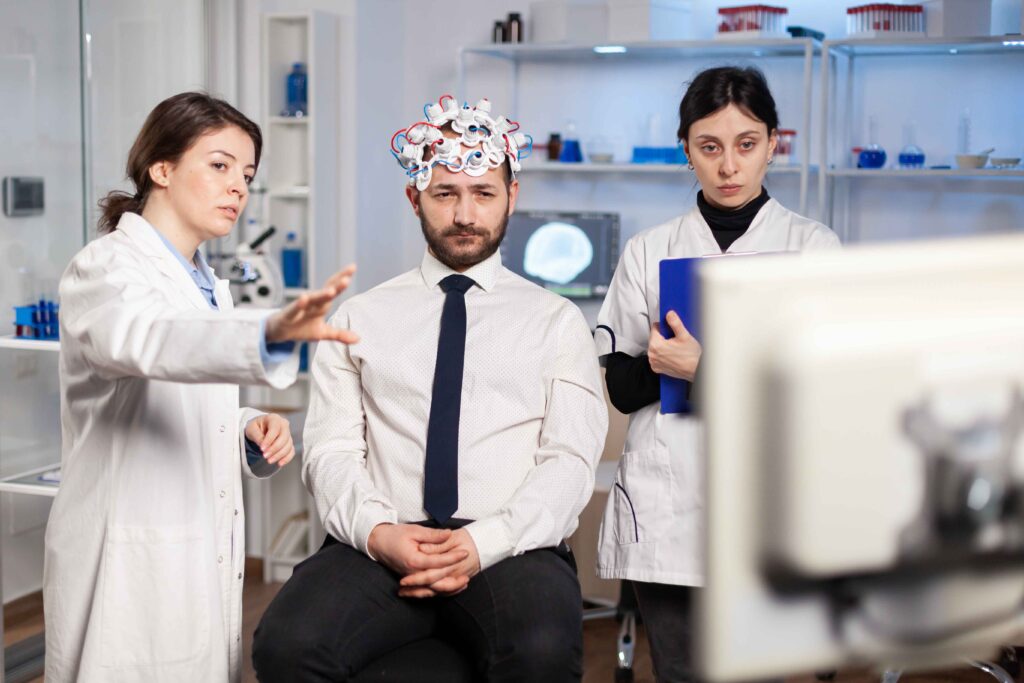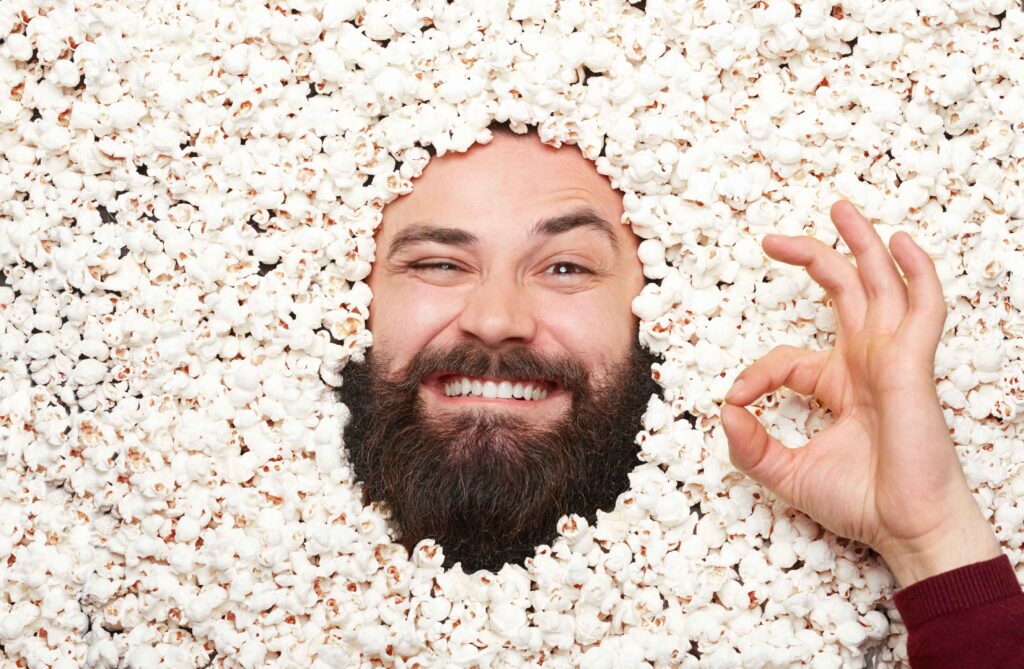Introduction
In this digital age, the relentless barrage of notifications and the demand for constant connectivity have reshaped our daily lives. For many, particularly those over fifty, this digital inundation leads to what is colloquially known as “popcorn brain,” a state where the mind hops from one thought to another, driven by the rapid stimuli of the digital environment.
This article delves into the concept of popcorn brain, exploring its profound effects on cognitive abilities, its ramifications on personal and professional lives, and offering robust strategies to manage and mitigate its impacts effectively.
Understanding Popcorn Brain
“Popcorn brain” aptly captures the essence of the cognitive state many experience in today’s digital world, where a ceaseless flow of digital information bombards the brain. This condition is marked by fragmented attention spans and a reduced ability to engage in deep, sustained thought processes. The continuous demands for our attention disrupt our immediate tasks and challenge the very nature of how we process information over the long term.
Neuroplasticity and Digital Demands
The brain’s remarkable ability to adapt and reorganise by forming new neural connections in response to learning or experience is known as neuroplasticity. While this adaptability is a powerful tool for survival and education, it also means that our brains are malleable to the negative aspects of our environments.
In the context of digital overload, our neural pathways are tweaked to process information quickly and fragmentedly, suitable for rapid task-switching but detrimental to tasks that require deep focus and sustained attention.
When we continuously split our attention between multiple streams of digital information—emails, text messages, social media notifications, and more—our brains begin to favour this rapid, shallow information processing. Over time, this can decrease our ability to concentrate on single, complex tasks and diminish our capacity for deep, critical thought, a phenomenon supported by various cognitive studies.

Insights from Dr Emily Johnson
Dr Emily Johnson, a neuroscientist with expertise in cognitive function and ageing, provides valuable insights into how our cognitive environments shape our mental capacities.
She notes, “In a world inundated with information, our brains are not merely passive recipients but active participants that continuously adapt to handle these streams. Unfortunately, this often involves sacrificing the depth of our cognitive processes in favour of a broader but more superficial understanding of the information we encounter.”
Dr Johnson explains that this shift from depth to breadth in cognitive processing is akin to skimming the surface of a vast ocean of information without ever diving deep to explore the rich, complex layers beneath. This change can impact our cognitive depth, leading to challenges requiring intensive focus, such as critical thinking, long-form reading, and complex problem-solving.
The Long-Term Impacts
The long-term impacts of popcorn brain can be profound. Individuals may find it increasingly difficult to engage in activities that require prolonged attention, such as reading books, watching complex movies, or following detailed instructions. The shift towards superficial processing can also affect our memory, with a tendency to forget details quickly as our brain allocates fewer resources to deep memory consolidation.
Moreover, this cognitive state can influence emotional and social intelligence, which relies on profoundly paying attention to and processing emotional cues and complex social interactions. When our attention is fragmented, we may miss subtle but essential aspects of communication, which can lead to misunderstandings and strained relationships.
Addressing the Issue
Recognising the signs of popcorn brain is the first step toward addressing this modern dilemma. By understanding the underlying mechanisms of neuroplasticity and how our digital habits shape our cognitive functions, we can begin to implement strategies designed to counteract these effects. This involves consciously adjusting our digital consumption habits, integrating practices that enhance our capacity for deep focus, and fostering environments that support rather than undermine our cognitive health.

Strategies to Combat Popcorn Brain
Time Management Techniques
Effective time management is crucial for mitigating the effects of popcorn brain. This section explores various time management methods, including the Pomodoro Technique, which has gained popularity for its simplicity and effectiveness. The technique involves working in focused sprints of 25 minutes followed by a 5-minute break. These intervals are known as “Pomodoros.” After four Pomodoros, a more extended break of 15 to 30 minutes is recommended, allowing the brain to rest and recover.
User Testimonials: I have recently started applying the Pomodoro Technique in my work routine and have found it enormously helpful. Managing multiple businesses and being an Executive Committee member of an industry advocacy group entails frequent daily tasks and focus shifts.
To maintain my focus, I’ve started placing my phone in a drawer or using a second laptop that does not have social media or other distracting applications installed. This setup is especially beneficial for tasks that require my undivided attention and deep focus.
The structured nature of the Pomodoro Technique helps me manage my workload efficiently across different tasks and companies, preventing the feeling of being overwhelmed and enhancing my productivity.
Step-by-Step Guide:
- Choose a task: Decide on the task you need to complete.
- Set the timer: Set a timer for 25 minutes and commit to working without interruptions.
- Work on the task: Stay focused until the timer rings.
- Take a short break: After the timer rings, take a 5-minute break to relax.
- Repeat: Repeat this cycle three more times, then take a more extended break.
This method helps manage the workload efficiently and trains the brain to focus in short, effective bursts while maintaining stamina over more prolonged periods through regular breaks.

Digital Detox
Regular digital detoxes can restore a sense of control over digital habits and reduce the cognitive load caused by constant connectivity. This section outlines various approaches to digital detox, such as scheduling specific tech-free times during the day or dedicating entire weekends to unplugging completely.
Expert Advice
Dr Lisa Roberts, a psychologist specialising in digital wellness, advises, “Setting aside tech-free times can help recalibrate your attention span and reduce dependence on digital devices. It can also improve sleep quality and reduce anxiety caused by constant notifications.”
Digital Detox Strategies:
- Daily Detox: Designate one hour each evening when all digital devices are turned off, ideally before bedtime, to improve sleep quality.
- Weekend Detox: Choose one weekend a month to completely disconnect from digital devices, focusing on offline activities like reading, hiking, or spending time with loved ones.
- Vacation Detox: Use vacation times to disconnect from digital devices as much as possible. This helps the mind recover from the cumulative stress of constant connectivity.
Mindfulness and Meditation
Incorporating mindfulness and meditation into daily routines can significantly enhance concentration, mental clarity, and overall cognitive function. This section provides practical exercises and meditation programs specifically tailored for older adults, supported by scientific studies demonstrating their benefits for mental health and cognitive restoration.
Practical Exercises:
- Mindful Breathing: Spend five minutes focusing solely on your breath. This simple practice helps centre your thoughts and reduces the tendency to jump from one idea to another.
- Guided Meditation: Use apps like Headspace or Calm, which offer guided meditations specifically designed for various needs, including focus, relaxation, and stress reduction.
- Body Scan: Perform a body scan by progressively tensing and relaxing different body parts. This helps connect the mind with the body and eases mental tension.
Scientific Support: Studies have shown that regular meditation and mindfulness exercises can improve focus, reduce age-related cognitive decline, and lower stress levels. These practices help rewire the brain to process information more calmly and deeply, countering the superficial processing tendencies induced by digital overload.

Conclusion
Addressing popcorn brain is essential for maintaining cognitive health and enhancing the quality of life as we navigate our increasingly digital world. This cognitive phenomenon, characterised by fragmented attention and an inability to focus, not only undermines our productivity and learning but also impacts our mental health and interpersonal relationships. Individuals can reclaim significant control over their cognitive faculties by thoroughly understanding its implications and integrating targeted strategies to manage digital consumption.
By understanding the implications of popcorn brain and adopting targeted strategies to manage digital consumption, individuals safeguard their mental health and enhance their capacity to focus and engage meaningfully across all areas of life. It is not merely about combating a temporary challenge but about fostering long-term habits that support sustained cognitive and emotional well-being. This commitment to mental health is essential for thriving in an age where digital technologies continue to permeate deeper into our daily lives.
